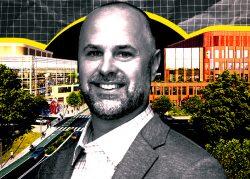The Bay Area’s life science real estate market ranks at or near the top nationally on most key measurements, providing the industry with a reason for optimism as the decade-long boom for the region’s lab companies looks to be ending.
With about 34 million square feet of life science property, the Bay Area has the largest inventory of such space compared with 10 other U.S. submarkets, according to a new Colliers report. The report, published at the start of June, offers a snapshot of the nation’s life science property sector by analyzing the relative performance of emerging and established hubs such as Boston, Raleigh-Durham and San Diego.
In addition to leading the pack in terms of market inventory, the Bay Area market recorded 3 million square feet of absorption last year, Colliers data show. That number was well above 10 other U.S. submarkets: Boston, which ranked second in that metric, recorded only about 2 million square feet of absorption last year.
The Bay Area ranks in the top five in seven of nine key metrics that Colliers used in its snapshot: market inventory; 2021 absorption; vacancy rate; average rent; new space proposed and under construction; the number of biomedical graduates in the area; and the amount of funding from venture capital firms and the National Institutes of Health, the federal government’s primary agency for biomedical and public health research.
The only statistics that the region ranked outside of the top five were the number of biomedical graduates, in which it placed sixth, and vacancy rates, in which it sits ninth.
While the vacancy rate is a closely watched metric to help gauge a market’s health, Bay Area life science landlords may be keeping an even closer eye on it over the next several quarters. The Nasdaq biotech index had shed about a third of its value since its 2021 peak as of last month, and companies are now finding it more difficult to access capital compared with this time last year.
While the market hasn’t seen a sharp uptick in life science companies jettisoning space in recent months, investors are now asking them about their plans for cutting expenses and hoarding cash, the San Francisco Business Times reported in late May. San Francisco-based Nektar Therapeutics, in the wake of clinical trial failures and the end of its cancer-fighting program with Bristol-Myers Squibb, is cutting jobs and plans to shed almost 200,000 square feet of office and lab space in the city’s Mission Bay area. Other businesses in a similar situation as Nektar’s may choose to relinquish their offices in order to keep themselves solvent.
Despite the headwinds facing the industry right now, Colliers’ data shows that the Bay Area’s life science real estate market is well-positioned to withstand those challenges. And reasons for optimism remain: On Thursday, Hayward-based Eikon Therapeutics said it signed a long-term lease for its new corporate headquarters in Millbrae. Its new base, located in an under-construction, 653,000-square-foot campus, totals about 285,000 square feet and can hold up to 750 employees. Its Hayward headquarters is a 72,000-square-foot lab building, according to Bisnow, meaning the biotech will almost quadruple its footprint once it relocates to its new home in northern San Mateo County from the East Bay.
Read more

